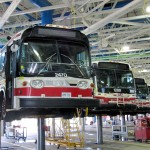
An ongoing question asked by corporate management is whether it makes better business sense to provide company vehicles for employees or reimburse them for the use of their personal vehicles. Invariably, this question gains increased scrutiny when there is senior management pressure to reduce costs. Since fleet is typically one of the top five spend categories, it is a ready target for scrutiny.
Some corporate managers feel an employee reimbursement program costs less than offering company-provided vehicles. Shifting the burden of the company vehicle program to employees may seem, at first, to be the ideal way to accomplish cost reductions. But, a closer examination shows this may not be the case.
If your company spends less by going to driver reimbursement, it is because your employees are shouldering the hidden costs. In fact, after closer analysis, reimbursement may actually be the more expensive option, and directly harm employee productivity and corporate image in the marketplace.
REASONS WHY REIMBURSEMENT DOESN’T WORK:
A Hiring Advantage is Eliminated
Providing a company vehicles gives a business a competitive edge in hiring top-caliber salespeople, technicians, and managers.
This is especially true if key competitors do not offer a company car program. A company-provided vehicle can be used as a recruiting tool and company benefit. Repeated industry surveys show prospective employees view a company vehicle as an equivalent benefit to health care coverage and pension benefits.
By not offering a company vehicle, employee recruitment and retention may be adversely affected. A company car is a positive recruitment tool. Competitors will use a company car as an incentive to recruit employees away from companies. Conversely, efforts to hire a prospective employee who already has a company car at a company that only offers reimbursement would be handicapped because of the large outlay of money that would be required to purchase a new car and insurance.
Employee Productivity Will Decrease
A business that does not provide a company vehicle has little or no control over the condition of the employee’s vehicle. If the amount of reimbursement by the company is not sufficient to cover actual expenses, the employee may defer preventive maintenance, which can lead to breakdowns, downtime, and unnecessary car-rental expense.
Also, since preventive maintenance is an immediate out-of-pocket expense, there is a temptation on the part of the employee to postpone routine maintenance, as well as more expensive mechanical repairs.
Depending on an employee’s financial wherewithal, some may find it difficult to pay for repairs out-of-pocket. If unable to pay, the vehicle may have to sit idle at a repair facility forcing the driver to either rent a vehicle (if they can) or wait for a check from the home office to get their vehicle out of the shop and back on the job.
In addition, a reimbursed driver will be required to spend an inordinate amount of time coordinating repairs, maintenance, rentals, and registration renewals, which could otherwise be devoted to selling.
In the event of an accident, with a company-provided fleet, staff do not have to manage the repair of the vehicle and get a rental replacement vehicle, which is a tremendous productivity enhancement.
Reimbursement’s Negative Affect on Employee Morale
A company-provided vehicle helps create high employee morale. Drivers don’t have to worry about getting insurance, paying for unexpected major repairs, or routine maintenance. Employees perceive that the company values them more if it entrusts them with a company car.
On the other hand, transport reimbursement can negatively affect employee morale since some will be overpaid while others underpaid, depending on the type of reimbursement program a company sets up.
Some reimbursement programs do not take into account mileage variability between employees. If the car allowance is provided to a low-mileage driver, then the employee is enjoying additional compensation. For high-mileage drivers, the car allowance may not be sufficient to cover the employee’s cost and may result in reduced performance by the employee because he or she feels cheated.
Different vehicle requirements, geography, and area economics require a very flexible reimbursement policy to cover these diversities or inequities will exist. Because of built-in inequities in a reimbursement program, some employees may feel they are being made to subsidize the company’s operating costs.
With a company-provided vehicle, there are no inequities among employees and no agitation for higher allowances. In addition, under reimbursement, employees will constantly agitate for higher allowances as cost-of-living prices escalate.
Employees also expect reimbursement for fuel reimbursement with the car allowance. Depending on the amount of the car allowance, it could cost the company more than providing a company car.
Also, with a reimbursement program, the company cannot distinguish if fuel is purchased for personal use or only business use.
Wrong Company Image May be Projected
A company vehicle is part of the corporate image presented to the world. With driver reimbursement, whether a vehicle is appropriate to the type of image the company wants to project is determined by an employee.
On the other hand, a company-provided program allows the company to control the suitability and appearance of vehicles used for the business. When an employee provides the vehicle, the company surrenders this control. The wrong vehicle can send the wrong message to customers.
If the company doesn’t provide the vehicle, it has no control over what the employee drives to a customer location. Customer perception is everything, especially when it involves prospective customers. Also, employees may be required to entertain customers and you don’t want them to drive customers in an unsuitable vehicle. You need to control the image you project to both the public and customers.
Another problem a reimbursement program creates is when someone is hired who already owns a vehicle; the company will most likely have to accept whatever he or she is driving.
Many companies decide against reimbursement because they want to present a professional, uniform presence in the marketplace. If a company uses a reimbursement plan, it cannot dictate what the employee purchases.
PART TWO COMING SHORTLY….






